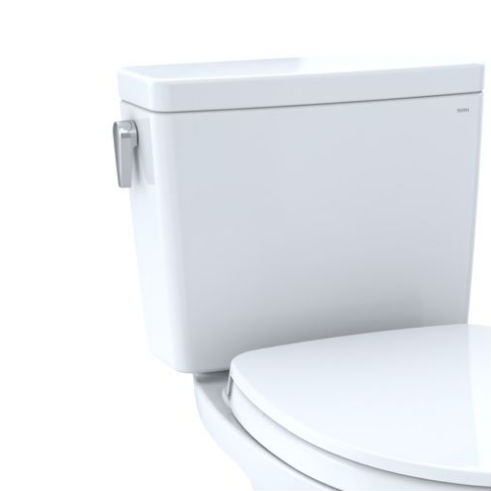When it’s time for a new toilet, why not go for something a little better for the environment? A double-flush toilet can be a great option for those who want to lower their footprint and conserve resources. Let’s dive a bit deeper into this type of toilet it’s pros, cons, pricing, and more.
More Control Over Your Flushes
Essentially, a double-flush toilet gives the user more control over how much water to use for their flushes. There are typically two buttons, one for liquid waste and one for solid waste. The liquid waste button will use a smaller amount of water (usually 0.8 gallons) while the second button will use up to 1.6 gallons to eliminate solid waste
Picking up in Popularity
Double-flush toilets are becoming more prevalent in the United States, but they’re already common in countries where water is more scarce, such as Australia. These toilets are also popular in regions where water treatment facilities are older or not as efficient. There are still treatment plants that don’t efficiently deal with their water supplies, and that can put more of a strain on our planet. By installing a double-flush toilet, consumers can do their part to conserve water.
After Australia led the way towards double-flush toilets in the 1980s, other nations started to implement their regulations. Before that, many standard toilets were using up to five gallons per flush, which is more than enough for solid waste, let alone liquid waste.
Challenges to the Double-Flush Toilet
There are still certain attitudes, especially in the United States, around bathrooms and waste. While some people are fine with letting liquid waste mingle, others find it repulsive. Some folks just want to flush any kind of waste as quickly as possible, but that attitude could be using way more water than is necessary.
Alternatives to Double-Flush Toilets
If a double-flush toilet isn’t a priority or doesn’t fit into your budget, then perhaps a low-flow toilet is another option. Water cost and usage have been on the minds of government leaders for years. Organizations continue to take measures and come up with new ways to conserve water and use it more sustainably. Back in 1994, the Energy Policy Act of 1992 was put into effect and made it so that toilets manufactured and installed after 1994 needed to use 1.6 gallons per flush or less.
A low-flow toilet can be a suitable solution for some consumers. The basic premise of a low-flow toilet is that it uses about half of the water as those traditional toilets without lowering the quality or force of the flush. Low-flow toilets can save up to 9,000 gallons of water per year. While older toilets use 3.5 (or more) gallons per flush, a low-flush toilet sticks to the EPA-approved 1.6 gallons per flush.
How Much Does a Double-Flush Toilet Cost?
The price of a double-flush toilet is going to vary depending on the model you choose, as well as any additional features you want. That being said, you can expect to see double-flush toilets selling for anywhere between $250 and $450, although prices can inch towards $1000 or more.
As for low-flow toilets, they typically cost between $200 and $500, but the price will depend on how basic the model you choose is. It’s best to analyze your family’s specific needs while looking at your overall budget before you commit to purchasing a specific toilet.
Pros and Cons of Double-Flush Toilets
The best advantage of a double-flush toilet is that it uses less water than a conventional model. You have the control when it comes to eliminating waste, and you can feel good about conserving water and helping out the environment.
These toilets aren’t outrageously expensive, so they should be an approachable option for many homeowners. With all of the options and styles out there, there should be an affordable choice for you. Besides, while you’re saving water with your toilet, you’ll also save money on your monthly water bill. Those savings can add up before you know it.
Finally, double-flush toilets tend to clog less than more conventional units, which makes for easier maintenance. That’s another way that you could save money.

